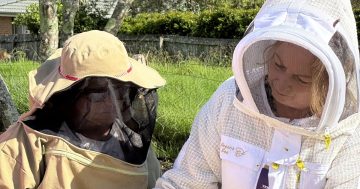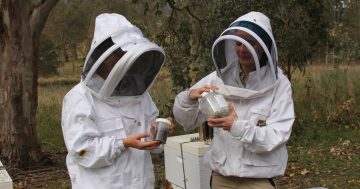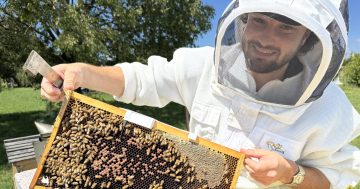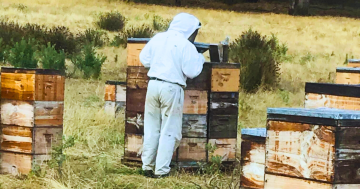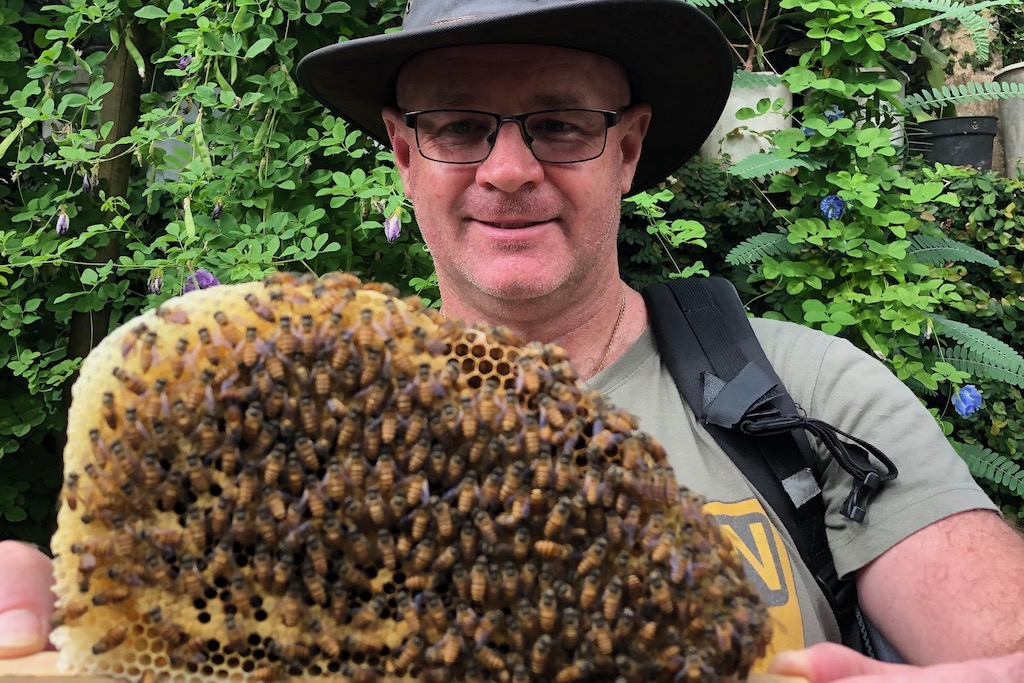
Goulburn Beekeepers Club vice-president John Scott travels widely pursuing his interest in bees. In this photo he is handling bees in Bali. Photo: John Scott.
With members numbering almost 100, Goulburn District Beekeepers Club is bouncing back from setbacks including COVID-19 and bushfires.
Newly elected president Renate Barrett says beekeeping’s growing popularity stems from people spending more time at home and making the most of their gardens.
Gearing up for spring and the swarming season, Renate said approaching a big, noisy, thick cloud of swarming insects could be intimidating.
“So we want to tell people it’s nothing to be scared of,” Renate said. “Contact your local beekeepers and they will come and collect the swarm.”
The club’s vice-president and biosecurity officer, John Scott, a newcomer to Goulburn with his wife, Maria, says members are on guard for the varroa mite, the most serious bee pest worldwide, which has been detected in NSW. He said hives should not be moved.
“But if we catch a swarm, we test it with an alcohol wash,” John said. “We collect half a cup of bees, put them in a container with methylated spirits, shake it up and filter it. If there are any mites, and hopefully there aren’t, and when the test is all negative, we can move the hive once.”
He said swarms should start about halfway through September, occasionally a few early ones occur in the beginning of the month and the swarm season extends to the middle or end of November.
Goulburn and district’s bee population was healthy, John said, except for a few unmanaged feral hives that suffered over the past season during all the rain.
A bee educator, John said in Goulburn bees were loving flowering cherries and ornamental pears, and more flowing plants were to come. Outside of town, bees are enjoying flowering eucalypts, dandelions, thistles and fireweed and other weeds farmers dislike.
Bees began to forage when the weather warmed up to 10 degrees, except if it was windy, John said. Temperatures of about 20 degrees will see them become highly active.
“The weather bureau is talking about a third La Nina, so if it is not as strong as last year, it should be OK (for bees),” he said.
Joining other volunteers working with the Department of Primary Industries addressing the varroa mite threat, John met like-minded beekeepers from Victoria and NSW, dealing with bees in warmer climates.
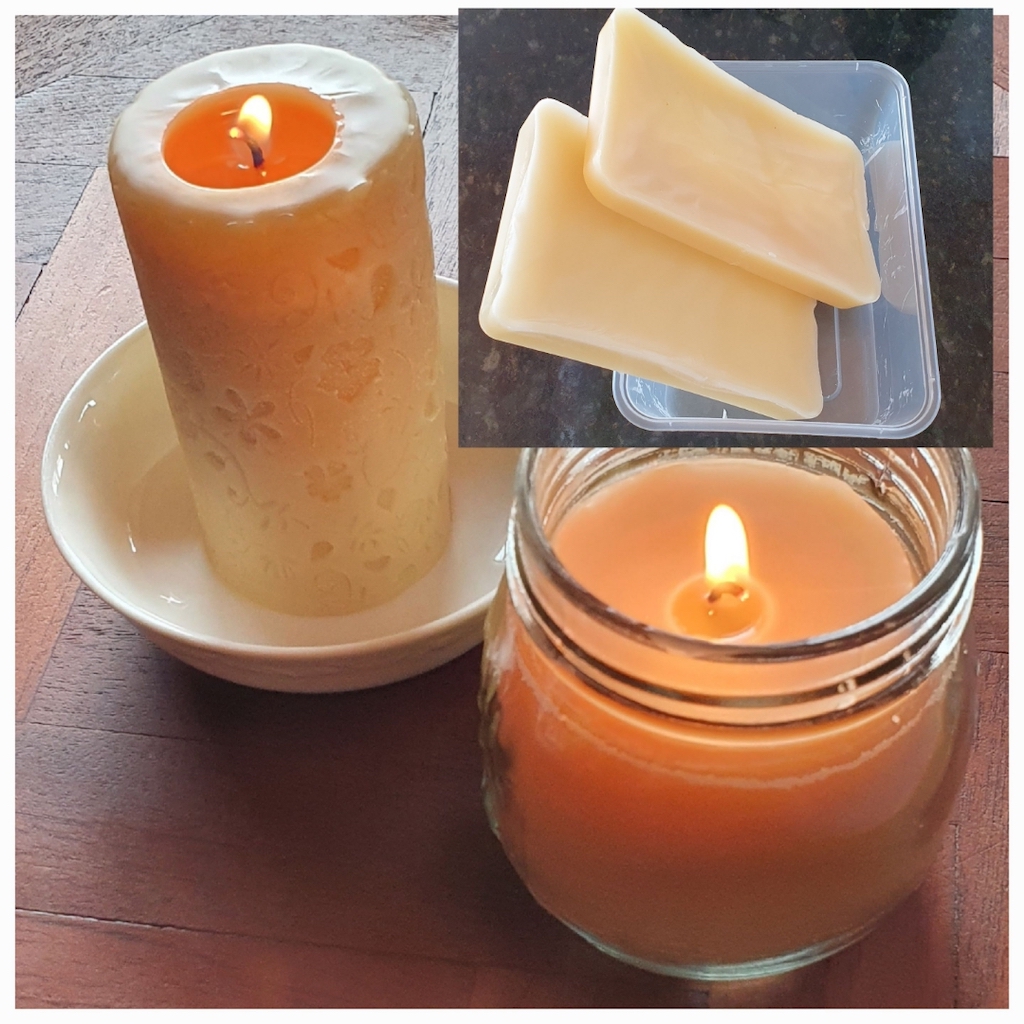
Unlike many beekeepers drawn to the hobby by honey, newly elected president Renate Barrett’s interest began with beeswax. She uses it for personal care products such as body butter and lip balm. Photo: Renate Barrett.
He believes Australia is winning the critical war against the varroa mite, a tiny, red-brown external parasite that has caused the loss of millions of bees.
“They (DPI) are well into the eradication phase of the operation so far,” John said. ”They are confident they have a grip on things and hopefully we can eradicate these mites. If we do that, we will be the only country in the world that has been able to do so.”
A sideline interest to his work as a permanent fireman, John’s EezyBeez workshops teach people about beekeeping. It won a recent Goulburn Chamber of Commerce business award in the agricultural and animal section.
John ran a workshop at Growing Abilities, a niche nursery at Bradfordville for people keen to begin beekeeping on the right foot, by learning the basics.
“It’s nice to support an organisation like that, that supports people with disabilities,” he said. “A lot of people didn’t know Growing Abilities were in Ross Street; now they do.”
Over a decade of beekeeping and seven years teaching people, he is discovering the wonders of nature.
“The big awakening for me was realising the different native bees we have in Australia,” he said. “European honey bees are only one of 20,000 species in the world. Australia has over 1700 bee species.
“When I discovered them, the range of different sizes and shapes and colours was amazing. You take the European bees and the amazing world they have, and times that by 1700. You have a whole new world of bees to discover out there when you start delving into native bees.”







